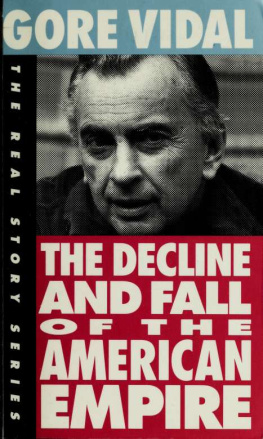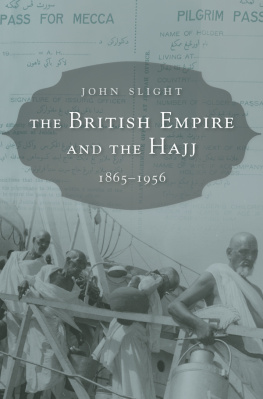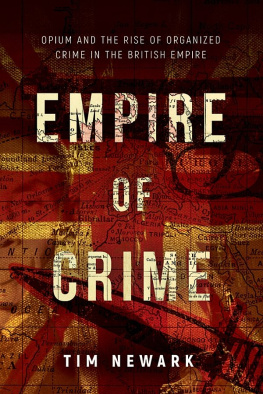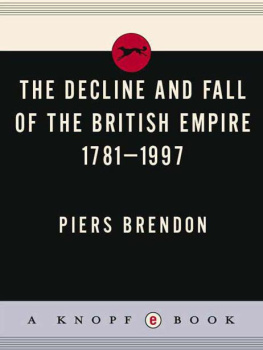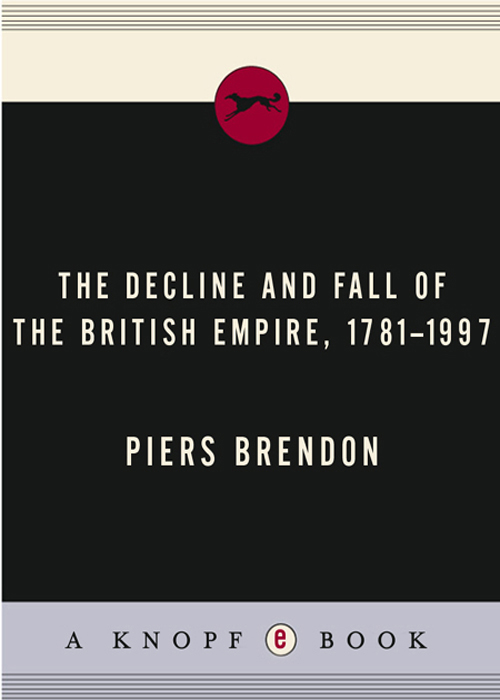
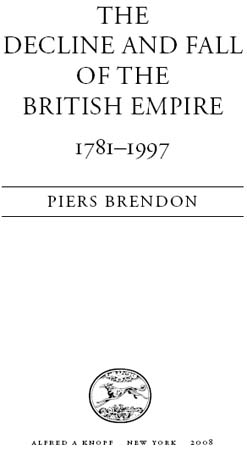

CONTENTS

1 The World Turned Upside Down
The American Revolution and the Slave Trade
2 An English Barrack in the Oriental Seas
Britannias Indian Empire
3 Exempt from the Disaster of Caste
Australia, Canada and New Zealand
4 To Stop Is Dangerous, to Recede, Ruin
The Far East and Afghanistan
5 Sacred Wrath
Irish Famine and Indian Mutiny
6 Spread the Peaceful Gospelwith the Maxim Gun
Towards Conquest in Africa
7 A Magnificent Empire Under the British Flag
Cape to Cairo
8 Barbarians Thundering at the Frontiers
The Boer War and the Indian Raj
9 The Empire, Right or Wrong
Flanders, Iraq, Gallipoli and Vimy Ridge
10 Aflame with the Hope of Liberation
Ireland and the Middle East
11 Englishmen Like Posing as Gods
West and East
12 White Mates Black in a Very Few Moves
Kenya and the Sudan
13 Spinning the Destiny of India
The Route to Independence
14 That Is the End of the British Empire
Singapore and Burma
15 The Aim of Labour Is to Save the Empire
Ceylon and Malaya
16 A Golden Bowl Full of Scorpions
The Holy Land
17 The Destruction of National Will
Suez Invasion and Aden Evacuation
18 Renascent Africa
The Gold Coast and Nigeria
19 UhuruFreedom
Kenya and the Mau Mau
20 Kith and Kin
Rhodesia and the Central African Federation
21 Rocks and Islands
The West Indies and Cyprus
22 All Our Pomp of Yesterday
The Falklands and Hong Kong
To
Vyvyen
With love and thanks

ILLUSTRATIONS

Section One
Missionary with Tahitian converts (Corbis); Wedgwood anti-slavery medallion (Wilberforce House, Hull City Museums and Art Galleries/Bridgeman Art Library); Imperial interior, 1890 (Getty); Lord and Lady Curzon hunt in Hyderabad, 1902 (AKG-London); Hyderabads army polo team (Corbis); Sir James Grigg enters Simla, 1938 (Corbis); Hong Kong Harbour seen from Victoria Park (John Hillelson Collection); The CPRs Iron Horse (Vancouver Public Library, Special Collections); Indian Railway engraving by Indian School (Private Collection/Bridgeman); Teatime in Ceylon (Corbis); Ceylon tea harvest (Corbis); King Thibaw and Queen Supayalat of Burma (Corbis); Christmas day in Burma, 1885 (Corbis); Scottish troops beside the Sphinx, 1882 (Corbis); Tourists on the Great Pyramid, 1938 (Corbis); Imperial stamps (Private Collection)
Section Two
Sikh officers and men, 1858 (National Army Museum, London/Bridgeman); Lucknow after the Mutiny (Corbis); British camp in Afghanistan (Corbis); Afghan riflemen on the Khyber Pass (Corbis); Irish peasants in the 1880s (Corbis); Dublins General Post Office after the Easter Rising (Corbis); The Rhodes Colossus (Getty); Isandhlwana after the battle, 1879 (National Army Museum/Bridgeman); Gold miners in De Kaap, South Africa (Corbis); Boers at Spion Kop, 1900 (Corbis); A meal during the siege of Ladysmith (Popperfoto); Anzac Cove, Gallipoli, 1915 (Corbis); Indian military hospital, Brighton Pavilion (Corbis); The Japanese march on Rangoon, 1942 (Corbis); Nigerian sergeant in Burma, 1944 (Imperial War Museum, London, neg. no. IND3098); Trade follows the flag, ephemera (Robert Opie Collection)
Section Three
The Imperial appeal, ephemera (Robert Opie Collection); Gandhis Salt March, 1930 (Corbis); Nehru and Jinnah, 1946 (Corbis); The last Viceroy and Vicereine of India (Corbis); The refugees of Partition, 1947 (Corbis); Jewish refugees arrive at Haifa, 1946 (Corbis); The exodus of Palestinian refugees to Gaza (Corbis); British troops confront Cypriots, Nicosia, 1955 (Corbis); The troopship Empire Ken at Port Said, November 1956 (Getty); Detaining Mau Mau suspects in Kenya, 1952 (Corbis); Jomo Kenyatta is hailed as Prime Minister, 1963 (Corbis); Queen Elizabeth II on her tour of Nigeria, 1956 (Corbis); Kwame Nkrumah leads Ghana to Independence, 1957 (Corbis); The Union Jack is lowered in Hong Kong, 1997 (Onasia)
Front endpaper
Imperial Federation map of the world showing the extent of the British Empire in 1886 Royal Geographical Society, London
Back endpaper
World map showing shipping routes and the extent of the British Empire in 1927 Royal Geographical Society, London

ACKNOWLEDGEMENTS

This book ranges across five continents and more than two centuries, so the debts I have incurred during the six years it took to write are correspondingly extensive.
I must first thank friends and colleagues at Churchill College, Cambridge, who have helped me in countless ways. I am especially grateful to Allen Packwood, Director of the Churchill Archives Centre, and to past and present members of his outstanding team, notably Natalie Adams, Louise King, Andrew Riley and Katharine Thomson. Dr. Dick Whittaker provided me with indispensable guidance on the Roman Empire. Hywel George gave me a unique insight into the workings of the post-war British Empire. Dr. Alan and Judy Findlay arranged an illuminating tour of the Foreign and Commonwealth Office, courtesy of their son Matthew. Lady Julia Boyd recalled experiencing the end of the British Empire in person: after the handover in Hong Kong on 30 June 1997, she witnessed the royal yacht Britannia, with the last Governor, the Prince of Wales and other dignitaries on board, sailing into the darkness on her final voyage.
Most of my work was done at the Cambridge University Library, an incomparable resource for the historian, and I owe thanks especially to Rachel Rowe, Godfrey Waller and Peter Meadows, the Bible Society Librarian. Elsewhere librarians and archivists went out of their way to lighten my task. I am under particular obligation to Dr. Gareth Griffith, Director of the British Empire and Commonwealth Museum, who put a room at my disposal in Bristol, where I was also able to draw on the expertise of Jo Duffy. Roderick Suddaby gave assistance at the Imperial War Museum. So did Kevin Greenbank at the Cambridge Centre for South Asian Studies. Further afield, Dr. Saroja Wettasinghe, Director of the National Archives of Sri Lanka, eased my path into her collections. Suzanne Mallon took immense trouble to introduce me to manuscript material at the Mitchell Library in Sydney.
In the course of my research I visited a number of ex-colonial clubsthe Tollygunge in Calcutta, the Bangalore Club, the Hong Kong Club and so onwhere I was most courteously received. I am particularly grateful to Allan Oakley, Secretary of the High Range Club at Munnar in Kerala, and to Stanley Gooneratne, Secretary of the Hill Club in Nuwara Eliya, who was kind enough to open his records for me.
Next page


